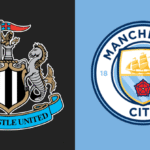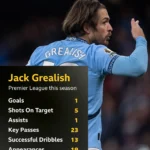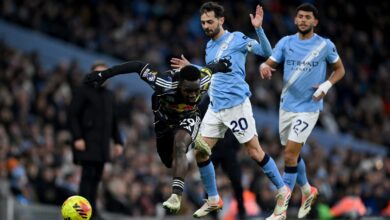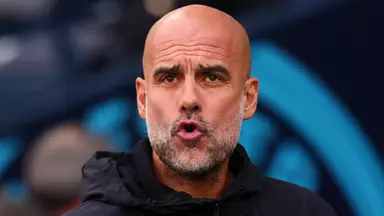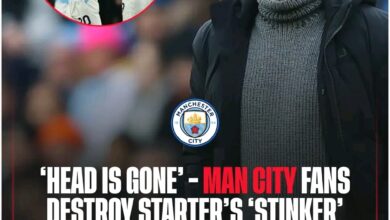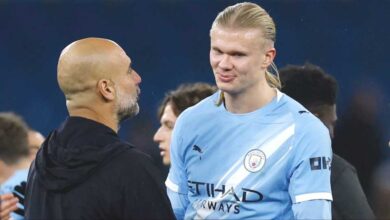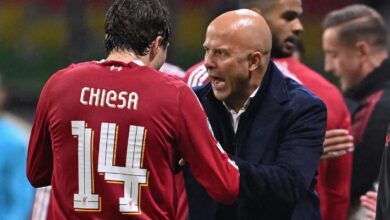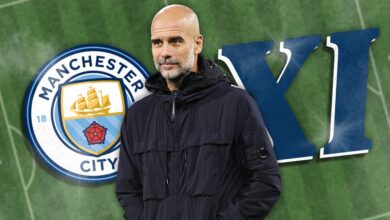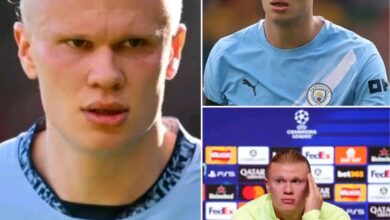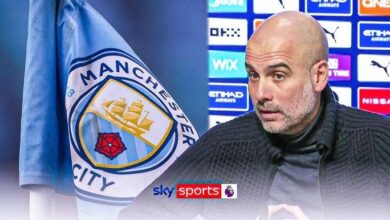Jack Grealish Transfer Saga: The Future of Manchester City’s £100 Million Man
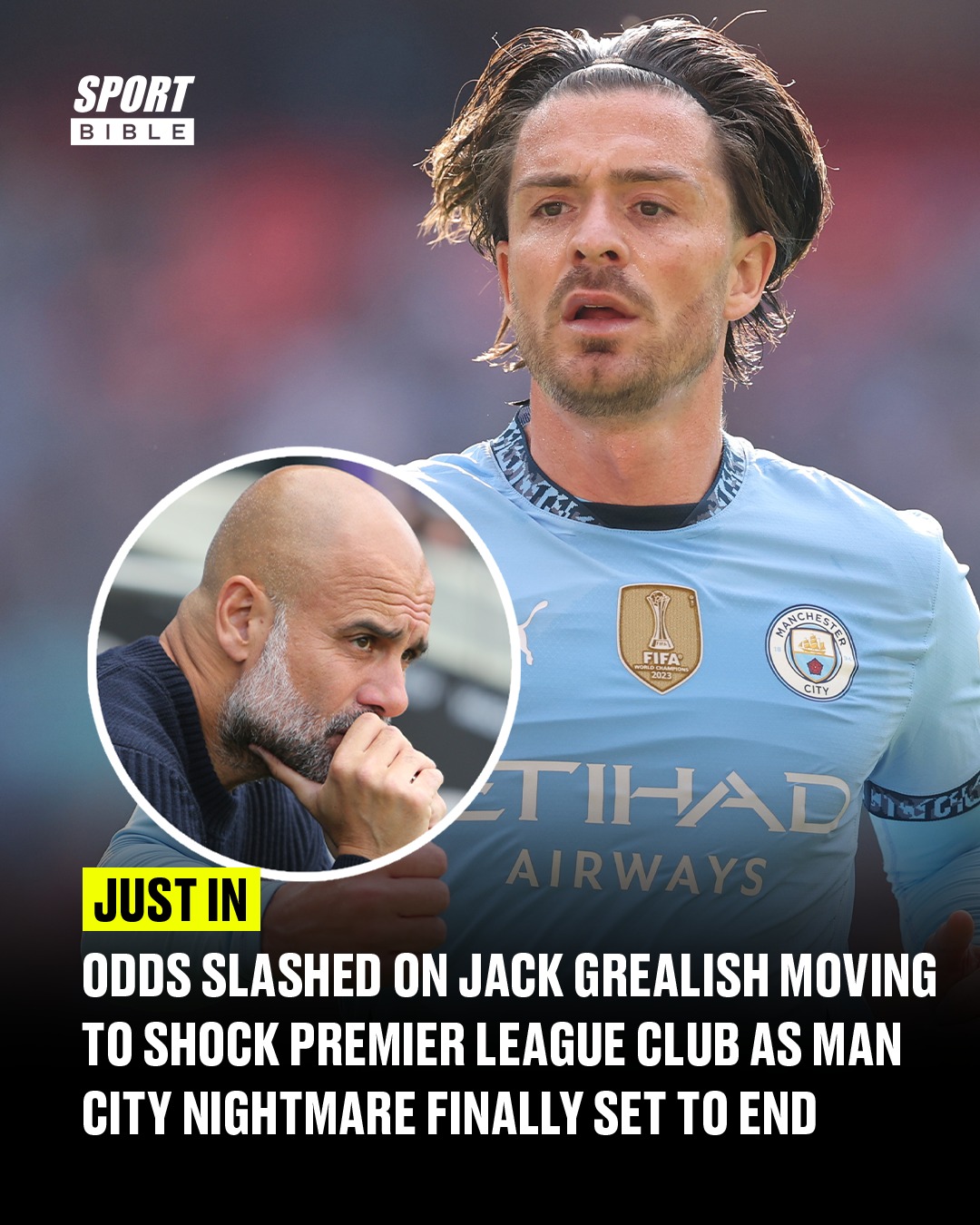
Jack Grealish’s future at Manchester City hangs in the balance as the summer transfer window approaches its climax. The England international, who became British football’s most expensive player when he joined City from Aston Villa for £100 million in August 2021, finds himself at a pivotal moment in his career. Once hailed as one of the Premier League’s most exciting talents, Grealish now faces an uncertain future at the Etihad Stadium, with mounting speculation suggesting his time under Pep Guardiola may be coming to an end.
The 29-year-old winger’s journey from Villa Park hero to Manchester City squad player has been marked by moments of brilliance interspersed with periods of frustration. His exclusion from City’s Club World Cup squad earlier this year sent shockwaves through the football world, serving as a stark reminder of how quickly fortunes can change in elite football. What was once seen as a dream move to one of Europe’s premier clubs has evolved into a complex narrative of adaptation, expectation, and ultimately, uncertainty.
The Guardiola Challenge: A Manager’s Ultimatum
Pep Guardiola’s recent comments about Grealish have provided perhaps the clearest insight into the player’s current standing at Manchester City. Following the team’s 2-1 FA Cup fourth-round victory over Leyton Orient, where Grealish was given a rare start, Guardiola delivered what many interpreted as both encouragement and warning to his £100 million asset.
“Jack is a fighter. He is there to fight in the stadiums when the people shout,” Guardiola stated, his words carrying the weight of expectation and challenge. “He didn’t play the last games, mainly because Savinho on the left side had an incredible connection with Erling (Haaland) but the season is still open. But against Orient I saw the glimpse that he is going to rebel, to show the manager how wrong he is. I love that. This is the level I would like to see from Jack. But it has not been like that.”
These comments reveal the crux of Grealish’s predicament at City. The Catalan manager’s tactical system demands specific qualities from his wingers – pressing intensity, positional discipline, and the ability to create consistent connections with teammates. While Grealish possesses undeniable technical ability and creativity, his adaptation to Guardiola’s system has been a gradual process, one that appears to have stalled in recent months.
The emergence of Savinho as a preferred option on the left wing has further complicated Grealish’s situation. The Brazilian’s “incredible connection” with Erling Haaland, as described by Guardiola, highlights the chemistry that has been somewhat elusive between Grealish and City’s star striker. This tactical preference has relegated Grealish to a peripheral role, with the England international failing to start a Premier League game since City’s 2-1 defeat to his former club Aston Villa on December 21.
The Numbers Game: Statistical Decline
The statistics paint a concerning picture for Grealish’s recent form and contribution to Manchester City’s success. His goal-scoring record, in particular, has become a source of criticism and concern. Reports suggest that Grealish managed just one goal in over a year at one point during the previous season, a statistic that would be alarming for any attacking player, let alone one who cost £100 million.
This decline in productivity has coincided with a noticeable change in Grealish’s playing style. Stan Collymore, the former Liverpool, Aston Villa, and Nottingham Forest striker, observed that Grealish “doesn’t go past people anymore,” suggesting that the directness and unpredictability that made him so effective at Villa has been diminished during his time at City.
The transformation of Grealish’s game under Guardiola has been gradual but significant. At Aston Villa, he was the focal point of attacks, given the freedom to drift across the front line and create moments of magic through individual brilliance. At City, he has been asked to operate within a more structured system, sacrificing some of his natural instincts for the greater tactical good. While this approach contributed to City’s treble-winning campaign in 2022-23, it has also coincided with a decline in Grealish’s individual statistics and, arguably, his confidence.
The Tottenham Connection: Champions League Attraction
The most significant development in recent weeks has been the dramatic shift in betting odds favoring Tottenham Hotspur as Grealish’s next destination. According to Betfair, Spurs have seen their odds cut from 4/1 to 11/10 to secure the England international’s signature, making them heavy favorites in what has become an increasingly competitive race.
The appointment of Thomas Frank as Tottenham’s new manager has added another dimension to this potential transfer. Frank’s reputation for developing attacking talent and his tactical flexibility could provide Grealish with the fresh start he appears to need. Moreover, Tottenham’s status as a Champions League club for the upcoming season addresses one of the key requirements outlined by England manager Thomas Tuchel, who stated that Grealish would need to be playing regularly “every three days” to earn a recall to the national squad.
The Champions League qualification is particularly significant for Grealish’s international ambitions. Having fallen out of favor with the England setup, a move to a club competing in Europe’s premier competition would provide him with the platform to showcase his abilities on the biggest stage. The prospect of regular first-team football in the Champions League could be the catalyst Grealish needs to reignite his career and reclaim his place in Tuchel’s plans.
However, the financial implications of such a move cannot be ignored. Grealish’s reported £300,000-per-week wages present a significant stumbling block for most clubs, including Tottenham. The question remains whether Spurs would be willing to meet these wage demands or if Grealish would be prepared to accept a reduction in salary for the promise of regular playing time and Champions League football.
Alternative Destinations: Exploring the Options
While Tottenham may have emerged as favorites, several other clubs remain in contention for Grealish’s signature, each offering different attractions and challenges. Everton, joint-second favorites alongside Nottingham Forest at 4/1, reportedly holds a particular appeal for the player himself. Football Insider’s claim that Grealish would “prefer” a move to the Toffees adds an intriguing personal element to the transfer saga.
The attraction of Everton for Grealish may stem from their ambitious project and the opportunity to become a key player in their long-term vision. Under their current management, Everton has shown a willingness to invest in quality players and provide them with the platform to excel. For Grealish, this could represent the perfect environment to rediscover his form and confidence.
Nottingham Forest, the other joint-second favorite, presents an interesting alternative. Their recent success in the Premier League and ambitious approach to transfers could appeal to a player seeking regular first-team football. The club’s willingness to invest in established Premier League talent suggests they could be serious contenders for Grealish’s signature.
Perhaps the most emotionally charged potential destination is Aston Villa, priced at 5/1 for a reunion with their former star. The prospect of Grealish returning to his boyhood club would undoubtedly capture the imagination of Villa supporters and provide a romantic conclusion to what has been a challenging period in his career. Villa’s recent progress under their current management and their return to European competition could make this a attractive proposition for all parties involved.
The Saudi Factor: Financial Temptation
The inclusion of Saudi Pro League clubs in the betting odds at 14/1 reflects the growing influence of Middle Eastern football in the global transfer market. Stan Collymore’s suggestion that Grealish “might end up going somewhere like Saudi” acknowledges the financial reality that could make such a move attractive to both player and club.
The Saudi Pro League’s ability to offer astronomical wages and the opportunity for City to recoup a significant portion of their initial investment could make this an appealing solution for all parties. However, such a move would effectively end Grealish’s international career prospects and remove him from the pinnacle of European football at a relatively young age.
The consideration of Saudi Arabia as a potential destination highlights the broader challenges facing Grealish’s career trajectory. At 29, he is approaching the peak years of his career, yet his options appear limited by a combination of wage demands, recent form, and the specific requirements of top-level European football.
The England Dimension: International Implications
Thomas Tuchel’s statement regarding Grealish’s need for regular playing time adds another layer of complexity to the transfer situation. The England manager’s requirement that Grealish must be playing “every three days” to earn a recall to the national squad creates additional pressure on the player to make the right career move.
Grealish’s international career has been a source of both pride and frustration. His performances for England during major tournaments have shown glimpses of his potential impact at the highest level, but his recent absence from squads due to limited club playing time has been a significant setback. The upcoming World Cup cycle means that Grealish’s next career move could be crucial in determining whether he can reclaim his place in England’s plans.
The international dimension also affects the type of clubs that would be realistic destinations for Grealish. While a move to Saudi Arabia might offer financial security, it would effectively end his international career. Conversely, a move to a Champions League club like Tottenham would provide the platform Tuchel has indicated is necessary for international selection.
Manchester City’s Perspective: Financial and Tactical Considerations
From Manchester City’s perspective, the Grealish situation presents both challenges and opportunities. The club’s initial £100 million investment has yet to provide the return they would have expected, both in terms of individual performance and tactical impact. The emergence of other attacking options, particularly Savinho’s successful integration into the team, has reduced Grealish’s importance to Guardiola’s plans.
The financial aspect of any potential transfer is crucial for City. While they are unlikely to recoup the full £100 million paid to Aston Villa, they will be keen to minimize their losses and free up significant wages from their payroll. The club’s need to comply with Financial Fair Play regulations adds another incentive to resolve Grealish’s situation before the transfer window closes.
Tactically, Guardiola’s system has evolved since Grealish’s arrival, with the manager placing increasing emphasis on players who can provide consistent defensive work rate alongside their attacking contributions. This shift in priorities has not favored Grealish’s natural playing style, creating a fundamental incompatibility that may be difficult to resolve.
The Fan Factor: Emotional Connection
Despite the uncertainty surrounding his future, Grealish’s emotional connection to Manchester City and its supporters remains strong. His passionate declaration at the Oasis concert in Manchester – “I love City more than anything! And do you know what I love more than anything? City fans! They’re the best fans in the world!” – provided a glimpse into his genuine affection for the club and its supporters.
This emotional connection, captured in a moment of unguarded honesty, adds a human dimension to what has become a complex transfer saga. Fan reactions to the clip were mixed, with some appreciating the authenticity of his words while others called for improved consistency on the pitch. The response from supporters reflects the complicated relationship between Grealish and the City fanbase – there is genuine affection and recognition of his talent, but also frustration at his inability to consistently deliver at the level expected.
Market Dynamics: The Transfer Landscape
The current transfer market dynamics play a crucial role in determining Grealish’s options. The inflated nature of modern transfer fees means that clubs are increasingly cautious about making significant investments in players who may not guarantee immediate returns. Grealish’s age, wages, and recent form create a challenging combination for potential suitors.
The market for attacking wingers has also evolved significantly since Grealish’s move to City. Younger, more versatile players who can contribute both offensively and defensively are increasingly valued over traditional wingers who rely primarily on creativity and technical ability. This shift in market preferences may limit the number of clubs willing to invest in Grealish at his current salary expectations.
Future Scenarios: Potential Outcomes
Several scenarios could unfold as the transfer window progresses. The most likely outcome appears to be a move to a Premier League club that can offer regular first-team football and the possibility of European competition. Tottenham’s current position as favorites reflects their ability to meet these criteria while potentially accommodating Grealish’s wage demands.
Alternatively, a return to Aston Villa could provide the emotional reset that Grealish needs to rediscover his best form. The familiarity of the environment and the guaranteed status as a key player could be exactly what his career requires at this juncture.
The possibility of remaining at Manchester City, while seeming unlikely given current circumstances, cannot be entirely discounted. A change in form, tactical adjustment, or injury to other players could alter the dynamic and provide Grealish with renewed opportunities to prove his worth to Guardiola.
Conclusion: A Defining Moment
Jack Grealish’s transfer saga represents more than just another player changing clubs; it embodies the challenges faced by individual creativity in an increasingly systematic modern game. His journey from Aston Villa’s talisman to Manchester City’s peripheral figure illustrates the difficulties of adapting to different tactical environments and expectations.
The coming weeks will likely determine the next chapter of Grealish’s career. Whether he moves to Tottenham, returns to Aston Villa, or pursues another option entirely, the decision will have far-reaching implications for his international prospects, personal happiness, and professional legacy.
For Manchester City, resolving the Grealish situation represents an opportunity to reset their attacking options and potentially reinvest in players who better fit Guardiola’s evolving tactical vision. The club’s ability to minimize their financial losses while finding a solution that benefits all parties will be crucial to how this transfer saga is ultimately remembered.
As the transfer window approaches its climax, Jack Grealish stands at a crossroads. The choices made in the coming days will determine whether he can reclaim his status as one of England’s most exciting attacking talents or whether his career will be defined by what might have been. The football world watches with interest as this £100 million story continues to unfold, knowing that the resolution could have implications far beyond the immediate transfer itself.
The Jack Grealish transfer saga serves as a compelling case study in modern football’s complex dynamics, where talent, tactics, finances, and personal ambitions intersect to create narratives that captivate fans and shape careers. Whatever the outcome, Grealish’s next move will be remembered as a defining moment in both his career and the broader landscape of contemporary football transfers.
